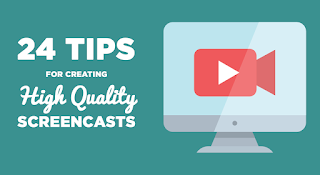Session 1: HyperDocs - Lisa Highfill
Notes from this session available here. HyperDocs are a way to create engaging lessons with a variety of multimedia.
Our first task was to explore Google Maps and find our 'happy place'. These instructions show you how to share a map with your class. There were some wonderful places noted on our map and this is one way to have students explore their environment, ask questions and make wonderings.
I particularly like the website where teachers are freely sharing their HyperDocs with other teachers.
For my age group, I'm excited to explore the work of Nadine Gilkison who teaches at my age level and be inspired.
Things to Explore Later:
Book Bentos
Book Bentos
Session 2: Screencasts: Learning & Reflection Anytime Anywhere - Anthony Speranza
This session uses Screencastify to create a digital recording of computer screen output in video format.
Before starting your screencast you need to think about:
- background noise or moving things on your desk - this can be picked up by the microphone
- use a web camera to showcase the classroom
- an app that supports whiteboard style teaching
- manage your background noise as much as possible
Screencasting allows for blended learning, which can be a mix of face to face and online learning - it may be online in the classroom so the teacher is also available - it can maximise the face to face time with the students.
Things to consider with Screencasting:
- Have a purpose in mind
- Plan what you are going to say
- Be mindful of visual distractions - do you want your audience to listen or watch or both?
- Start by keeping it short and to the point - particularly for your students
- Be mindful of confidential tabs or whatever else you have open on your computer screen
- Think about the lighting around you
- Students will respond better if it is something you have created
These are some tips from Screencastify and from EdTechTeam

Sketch.io - to draw as you are screencasting
AWW board - a web white board






No comments :
Post a Comment